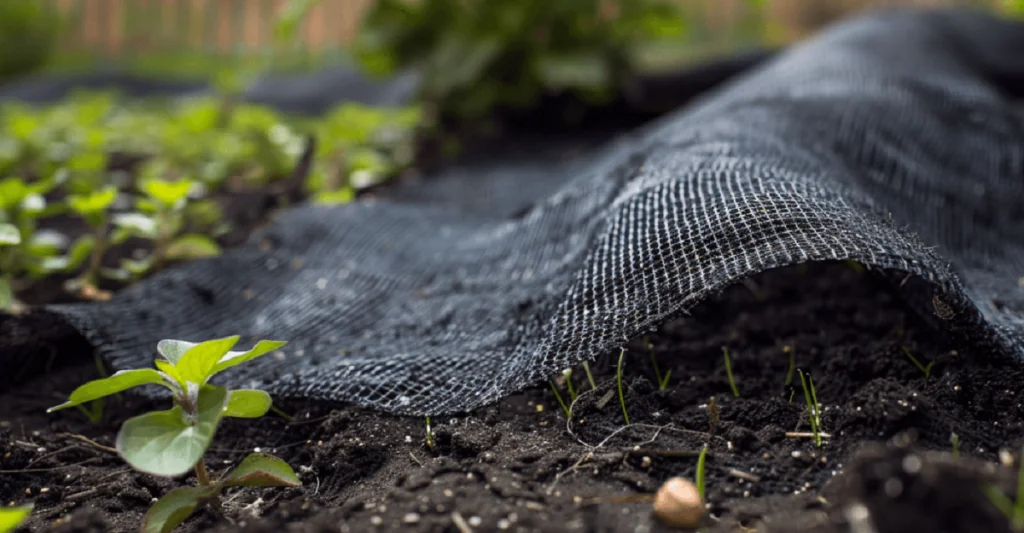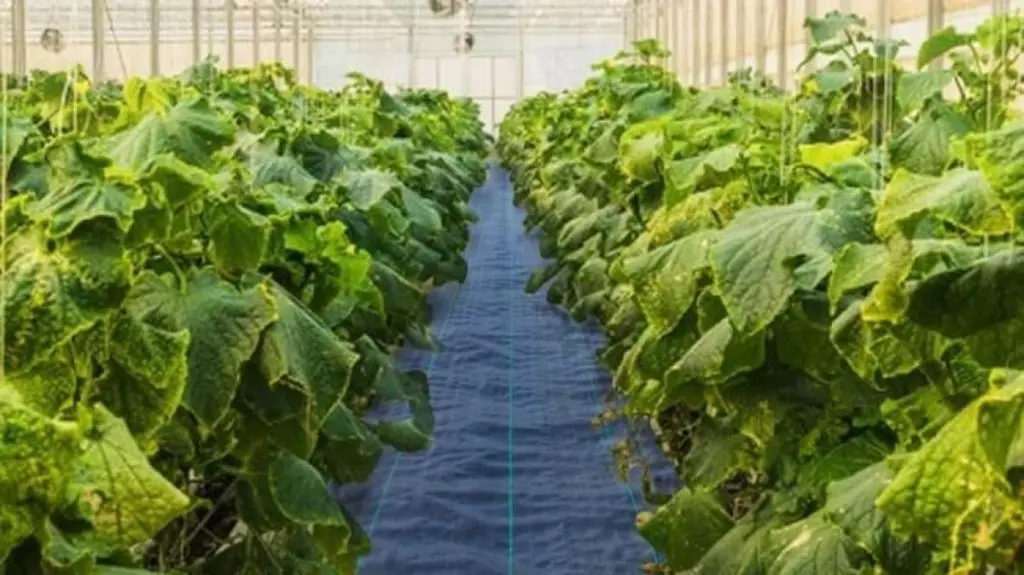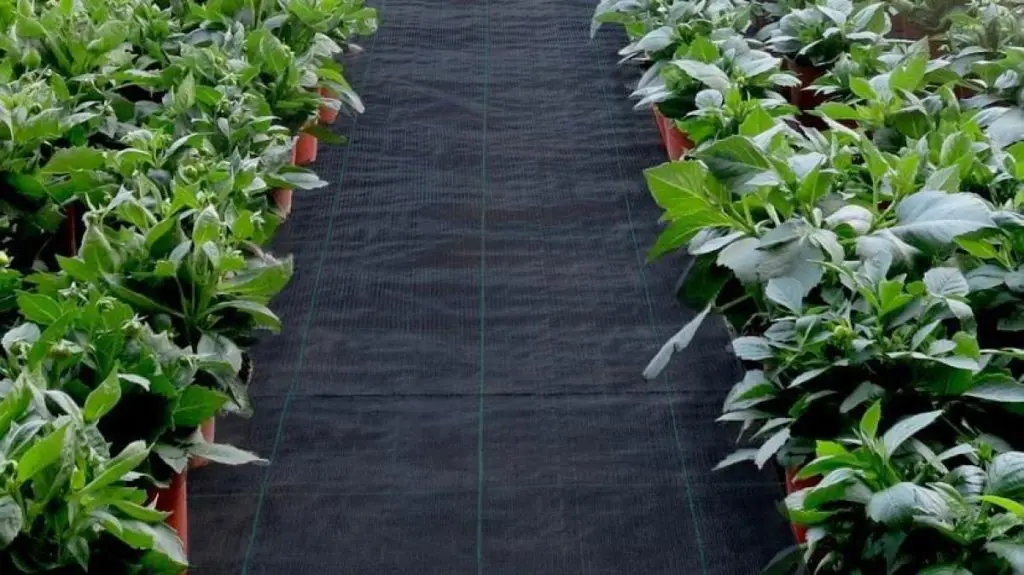Have you ever found yourself scratching your head in the gardening aisle, trying to figure out whether to go with geotextile fabric or landscape fabric? Trust me, you’re not alone! These two materials might seem like they’re cut from the same cloth, but they actually offer different benefits and serve distinct purposes.
Wait, do not forget to check out VEVOR’s landscape and geotextile fabric options.
In this comprehensive guide, we will delve into the world of ground cover, exploring the differences between geotextile fabric and landscape fabric.
We’ll break down the key features of geotextile fabric and landscape fabric, highlighting their unique strengths and potential uses. By the end, you’ll have a clear understanding of how each material can contribute to the success of your landscaping projects, allowing you to choose the most suitable option with confidence.
Table of contents
Geotextile fabric vs. Landscape Fabric: An Overview
Geotextile Fabric
Imagine geotextile fabrics as the Hercules of fabrics. This tough fabric isn’t about fancy capes but about getting the job done. Think of it like a sturdy net woven by construction wizards. It keeps different soil layers from becoming a messy mix, ensuring your driveway stays firm, and your wall doesn’t crumble. It even acts like a filter, letting water flow while stopping precious soil from washing away.
Geotextile fabric isn’t just for show, though. It tackles tough tasks like protecting shorelines from angry waves and helping plants grow on otherwise unstable slopes. It even plays a hidden role in landfills and drainage systems, quietly contributing to a greener future.
Landscape Fabric
While geotextile fabric handles the heavy lifting, landscape fabric brings zen to your garden. Think of it as the calming gardener, gently guiding your plants towards lushness.
For instance, have a look at VEVOR garden weed barrier fabric; this fabric isn’t about brute force but about creating a peaceful haven for your green friends. It shouts no to pesky weeds, blocking their access to sunlight and nutrients, leaving your desired plants free to thrive. It acts like a breathable blanket, hugging your soil and preventing it from washing away during rain or wind, especially on slopes or under a cozy layer of mulch. ️
Landscape fabric even becomes your mulch’s best friend, keeping it neatly in place instead of scattered across your garden. But worry not; it doesn’t forget your plants – water and nutrients still flow freely, nourishing them from below.
Comparing Geotextile Fabric and Landscape Fabric
When it comes to managing your land, both geotextile fabric and landscape fabric offer solutions, but their strengths lie in distinctly different areas.
Functionality: Erosion Control vs. Weed Suppression
Erosion Control with geotextile fabric
Imagine geotextile fabric as the brawny bouncer of the construction world. Think strong, woven fibers like a superhero’s suit. This heavy-duty hero tackles tough jobs like:
- Preventing soil erosion: It holds your precious dirt in place, even when faced with rain, wind, or grumpy squirrels.
- Separating layers: Like a construction traffic cop, it keeps different materials (think gravel and soil) from mixing and causing chaos.
- Reinforcing the ground: Think driveways, retaining walls, and drainage systems. Geotextile fabric adds extra muscle to help them handle stress and stay strong.
Weed Suppression with Landscape Fabric
Now, picture landscape fabric as the chill gardener sipping tea amidst blooming flowers. Made from woven or non-woven materials, it’s all about creating a peaceful environment for your plants:
- Weed suppression: This gentle giant blocks pesky weeds from stealing your plants’ sunlight and nutrients.
- Soil retention: Think of it as a hug for your dirt, keeping it from washing away during heavy rain.
- Mulch support: It acts like a breathable barrier, letting water and nutrients reach your plants while keeping mulch in place.
Applications: Civil Engineering vs. Gardening/Landscaping
Geotextile fabric: The Mighty Construction Crew
Imagine geotextile fabric as the sturdy backbone of any construction site. Like a team of tireless workers, it’s woven together to tackle tough jobs:
- Playing nice with layers: Keeps different soil types from becoming a messy mix, ensuring roads, walls, and slopes stay strong and stable.
- Giving a helping hand: Adds extra muscle to foundations, driveways, and hills, making them tough enough to handle anything you throw at them.
- Filtering like a pro: Lets water flow while stopping soil particles from washing away, keeping drainage systems happy and healthy.
- Taming the elements: Acts as a shield against wind and water, protecting shorelines and slopes from erosion and providing a helping hand for plants to grow.
- Building a greener future: Plays a key role in landfills, drainage systems, and even special bags, helping protect the environment and build lasting infrastructure.
Landscape Fabric: The Gardener’s Gentle Touch
Unlike its burly cousin, landscape fabric is all about creating a peaceful haven for your plants. Think of it as the calming presence in your garden:
- Keeping weeds at bay: Creates a gentle barrier, blocking sunlight and nutrients from reaching unwanted visitors, allowing your favorite plants to thrive.
- Hugging the soil: Acts like a breathable blanket, preventing precious soil from washing away during downpours or windy days, especially on slopes or under a cozy layer of mulch.
- Mulch maestro: Keeps your mulch in place, preventing it from becoming a scattered mess while still letting water and nutrients reach your plant friends below.
- Pathways made easy: Provides a stable base for your gravel or stone paths, stopping them from sinking into the ground and making your walks even more enjoyable.
Performance and Durability
Geotextile Fabric
- Imagine this: lifting weights with your bare hands? Easy! That’s geotextile fabric. It’s super strong, holding up under heavy loads like cars and even buildings. So whether it’s a busy road or a massive hill, geotextile fabric can handle it.
- It’s not just strong, it’s also a fighter! Sun, rain, harsh chemicals – they’re no match for geotextile fabric. Think of it as a weatherproof warrior, lasting for years without needing any pampering.
- And the best part? Once it’s in place, set it and forget it. There is no need for constant attention; it just quietly does its job of keeping things stable and protected.
Landscape Fabric:
- Now, imagine a fabric that can take a beating in the garden. Sharp tools, playful pets, even forgetful feet – Landscape Fabric says, “bring it on!” It’s puncture-proof, ensuring those pesky weeds stay underground where they belong.
- Just like your favorite shirt that never fades, high-quality Landscape Fabric laughs in the face of the sun. It stays strong and effective year after year, keeping your garden weed-free and looking sharp.
- And let’s face it: nobody wants to spend all day wrestling with fabric in the garden. Landscape Fabric is your DIY best friend. Installing it is a breeze, requiring just a few basic tools and some elbow grease. So you can get back to the fun part – planting and enjoying your beautiful space!
Cost Considerations
Geotextile Fabric
- Think of it like a high-performance car. The initial cost might be higher, but it’s built to last and needs less upkeep. Specialized materials and engineering make it strong and durable, perfect for big projects with demanding needs.
- But fear not, the savings are there! Over time, geotextile fabric saves you money on repairs, replacements, and constant maintenance. It’s like paying more upfront for a car that rarely needs the mechanic, saving you a bundle in the long run.
- For large-scale projects, geotextile fabric becomes a cost-effective hero. Imagine building a massive wall to prevent erosion. Sure, the initial investment is bigger, but it saves you from costly repairs down the line and keeps your project strong for years to come.
Landscape Fabric
- Now, picture a reliable, fuel-efficient car. It might not be the fanciest, but it gets the job done at a friendly price tag. Landscape Fabric is generally more affordable than geotextile fabric, making it a great option for budget-conscious gardeners and landscapers.
- But affordability isn’t only perk! It also saves you money on maintenance. Less time spent weeding, buying herbicides, or paying someone to do it all? That’s real savings right there!
- For smaller projects like your garden or a backyard path, Landscape Fabric shines. It keeps weeds at bay and protects your soil without breaking the bank. Think of it as a smart investment that gives you more time and money to enjoy your beautiful space.
While geotextile fabrics and landscape fabric serve different purposes and excel in distinct applications, both offer valuable solutions for erosion control, soil stabilization, weed suppression, and landscape maintenance.
By understanding their functionalities, applications, performance attributes, and cost considerations, individuals can make informed decisions when selecting the most suitable ground cover for their specific project requirements.
Installation Methods
Geotextile Fabric
Installing geotextile fabric might sound fancy, but think of it like preparing the perfect canvas for your project. Just like you wouldn’t paint on a bumpy wall, you need a smooth, stable base for geotextile fabric to work its magic. So, let’s break down the steps:
Clear the Stage
Imagine you’re setting up for a party. First, you’ve got to clean up! Remove any rocks, sticks, or party crashers (debris) that could damage the geotextile fabric. Think smooth sailing, not bumpy rides.
Roll Out the Welcome Mat
Unroll your geotextile fabric like you’re laying out a red carpet for royalty (the soil, of course!). Make sure it lies flat and overlaps like puzzle pieces so there are no gaps for uninvited guests (weeds) to sneak in.
Secure the Party Zone
Don’t let your carpet fly away! Use stakes, pins, or fancy tools like trenching (digging a moat) to hold the geotextile fabric in place. It’s like tying down the tent at a windy picnic – stability is key!
Patchwork Perfection
For bigger projects, you might need to join multiple geotextile fabric pieces. Think of it like sewing patches on a quilt. Use heat, glue, or even stitching (depending on the material) to create a seamless, weed-proof barrier.
Remember, even though it sounds technical, installing geotextile fabric is all about creating a strong, stable foundation for your project. Just follow these steps, and you’ll be ready to build or garden with confidence!
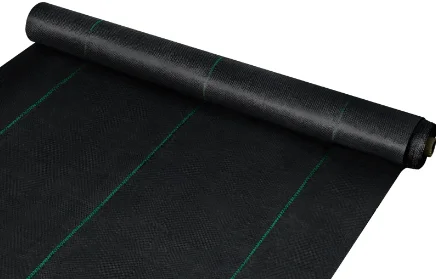
Landscape Fabric
Landscape fabric is your new best friend! Installing it is like laying down the law in the Wild West of your garden, keeping those pesky weeds in check and leaving you more time to enjoy your beautiful space. Here’s how to do it:
Clear the Stage
Imagine you’re preparing your garden for a big party. First, you’ve got to clear away any rocks, sticks, and uninvited guests (weeds) that could cause trouble. Think smooth sailing, not tripping hazards!
Roll Out the Peace Treaty
Unroll your landscape fabric like a giant welcome mat for your plants. Make sure it overlaps like puzzle pieces so there are no gaps for sneaky weeds to sneak through.
Secure the Fort
Don’t let the wind blow your peace treaty away! Use special staples, pins, or even fancy tools like digging a moat (trenching) to hold the fabric in place. It’s like tying down the tent at a windy picnic – stability is key!
Plant Your Flag (and Flowers)
Now’s the fun part! Cut or poke holes in the fabric to plant your flowers, trees, or anything else that makes your garden smile. Think of it like planting your flag in conquered territory (weed-free land!).
Mulch it Up
Add a layer of mulch or decorative gravel on top of the fabric. This is like putting on extra armor – it helps suppress weeds even more and makes your garden look super cool!
Occasional Patrols
Even the best peace treaties need occasional check-ups. Now and then, take a look to make sure everything’s still weed-free and the fabric is doing its job. If you see any troublemakers (weeds), pull them out and patch up any holes.
Remember, installing landscape fabric is all about creating a peaceful haven for your plants. Just follow these steps, and your garden will be weed-free and blooming in no time!
Selecting the Right Ground Cover for Your Project
Choosing the right one is like picking the perfect outfit for your garden – it needs to look good, be functional, and suit your lifestyle. So, let’s break it down!
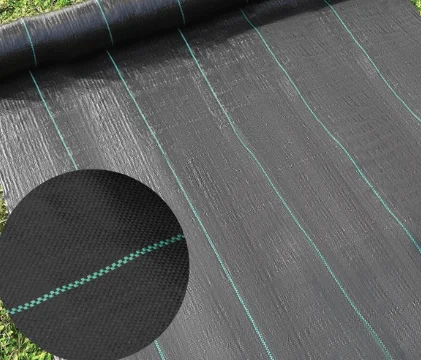
Step 1: Know Your Mission
- What’s your garden’s goal? Is it a secret hideaway for fairies (erosion control)? A weed-free paradise (suppression)? A moisture-loving oasis (retention)? Figure out your main objective first.
- Think about the terrain; Is it sunny or shady? Hilly or flat? Rocky or Sandy? Knowing your landscape’s quirks helps narrow down the options.
- How much traffic will it see? Are playful puppies going to zoom around, or is it a quiet meditation zone? Consider foot traffic and weight (think cars for driveways) when choosing.
- Upkeep? Friend or foe? Do you want a low-maintenance zen garden, or are you ready to get your hands dirty? Different ground covers need different levels of TLC.
Step 2: Consider the Climate
- Think like a local plant! Choose something that thrives in your region’s temperature swings, rainfall patterns, and seasonal changes. Remember, happy plants make happy ground covers!
- Be kind to the environment: Opt for options that don’t harm the soil, water, or local wildlife. Sustainability is always in fashion!
- Think long-term: Sure, some covers are cheap upfront, but will you spend more replacing them later? Invest in quality for lasting beauty and reduced costs.
Step 3: Get Expert Advice
- Don’t go it alone! Landscape architects, engineers, and horticulturists are your ground cover gurus. They can recommend the perfect plant partner based on your specific needs.
- Chat with the vendors: They know their stuff! Ask about product selection, installation tips, and how to keep your cover looking fabulous.
- Remember, your garden is unique! Experts can offer site-specific solutions to tackle any tricky terrain or challenges you might have.
Last Lines
Whether you’re aiming to conquer soil erosion like a pro engineer or want to keep those pesky weeds at bay in your garden, both geotextile fabric and landscape fabric have their unique strengths. It all comes down to understanding your project needs, considering factors like durability, maintenance, and budget, and ultimately making the choice that best suits your green space goals. And hey, if you’re ready to take the next step and get your hands on some top-quality geotextile fabric or landscape fabric, why not check out VEVOR’s fantastic range of landscaping materials? They’ve got everything you need to turn your outdoor dreams into reality.

